Do’s and don’ts for teaching comprehension
It’s week four of our deep dive into “The Big Five!” So far we’ve explored phonemic awareness, phonics, and fluency. Today we’ll take a look at do’s and don’ts for teaching comprehension.
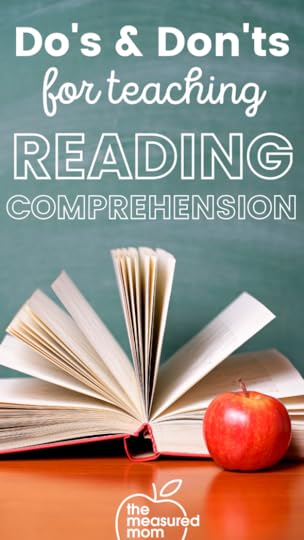

Have you ever heard people say that in the primary grades, children “learn to read” and in the later stages they “read to learn”? There’s some truth to that. At the very early stages, students cannot comprehend what they’re reading because they’re not reading fast enough.
They have to develop some automaticity with word recognition and fluency of rhythm to be able to free up more of their brains for comprehension.
However, the act of teaching comprehension isn’t something we should push off to a later date.
In their recent article in The Reading Teacher, The Science of Reading Comprehension Instruction, Duke, Ward & Pearson have this to say:
Given the absolute necessity of foundational word-reading skills, it is tempting to think that instruction should begin with a focus on developing those and later turning to comprehension.
Nell K, Duke, Alessandra E. Ward & P. David Pearson
However, research has supported a simultaneous, rather than sequential model of reading instruction.
Along with development of phonological awareness, print concepts, and alphabet knowledge, young learners in preschool and early elementary school benefit from efforts to develop oral language comprehension …
As young learners being to read texts themselves, comprehension instruction, alongside phonics and other foundational skills instruction, has an important place.
We might ask … how do we teach comprehension when students aren’t doing much reading? Or when the reading they do is slow and tedious because they’re still learning phonic decoding?
The answer lies in reading aloud to your students.

An interactive read aloud is not when you grab a book off the shelf to fill five minutes. While that’s certainly a good thing to do, an interactive read aloud is something you plan for.
You choose a book before you meet with your students, determine teaching points (such as skills and vocabulary), and (if you’d like) jot them down on sticky notes. Put those notes at the places in the book where you plan to stop and talk. Then read and enjoy!
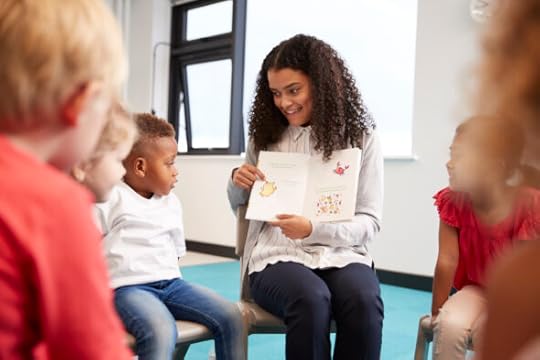 In an interactive read aloud you might …
In an interactive read aloud you might …Do these things before you read
talk about the author and illustratortake a sneak peek at the book before you read (read the back or inside summary)examine the table of contentsinvite students to discuss what they already know about the topicmake predictions about what will be in the textDo these things as you read
stop to examine new vocabulary wordsthink aloud as you readinvite students to make connections to the textencourage students to interact with the book by having them talk to a partner, act out a sentence or short part of the book, make a quick sketch or note, or participate in a class discussionDo these things after you read
ask students to retell the storyhave students name things they learnedcheck predictionsWhen you ask thought-provoking and open-ended questions, your students will engage in high-level thinking. With your help, they will have thoughtful discussions with you and their classmates.
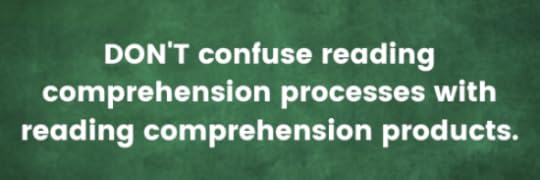
The products of reading comprehension are demonstrations of what the reader knows and understands AFTER reading.
Examples of reading comprehension products include:
Answering text-based questionsWriting a summaryCompleting a worksheet about a bookRetelling a storyCompleting a graphic organizer about a textIn contrast, a reading comprehension process is a skill or process that students have which enables them to create the product.
Examples of reading comprehension processes include:
Making inferencesMonitoring comprehensionMaking predictionsAsking questions while readingWhat’s the point, you ask?
The point is that, too often, we have our students complete products and think that we’re teaching comprehension.
We’re not.
When you assign a worksheet with questions after students read a story, you’re not teaching comprehension. You’re assessing comprehension.
Teaching and assessing both have their place, but let’s not fool ourselves into thinking we’re teaching when we’re just checking understanding.
We must make time to explicitly teach reading comprehension processes.
It troubles me when I hear some people in the science of reading community claim that once students are proficient with decoding and reading fluently, comprehension will “just happen.”
We can’t (and shouldn’t!) count on that. Comprehension is just like everything else in a structured literacy classroom. We must explicitly teach it.
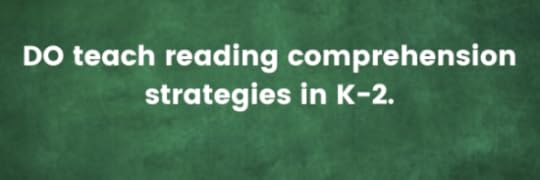
In recent years, reading comprehension strategy instruction has come under attack. This may be for good reason; some teachers (I’m raising my hand here!) have focused so much on the process that they almost forget about the product.
For example, a reading lesson becomes more about learning the skill of activating prior knowledge than about actually learning the life cycle of a frog.
Here’s a key thing to remember:
Reading comprehension strategies should be taught as TOOLS to help students comprehend text. They are not an end in themselves.All that said, researchers tells us that even primary students benefit from reading strategy instruction (and – you guessed it – a lot of this instruction will happen through explicit modeling during interactive read alouds).
Here’s an infographic with the strategies to emphasize in the early grades.
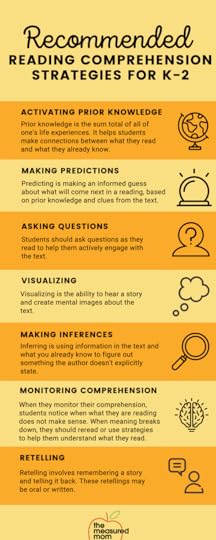
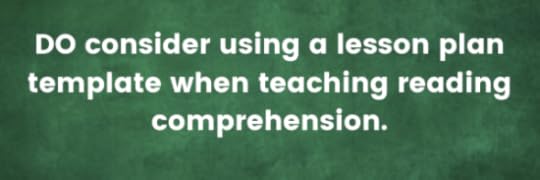
As you’re planning your interactive read aloud, whole group lessons in which students read grade-level text, or small group lessons, take some time working through a template like this one.
This template is based on the Berger Framework:
Summary of understandings: What themes or concepts do you want your students to learn from this text?Text challenges to address: What challenging sentence structure, inferences, etc. will students need help with?
Before reading: What will you do to prepare students to read? You might activate/build prior knowledge, introduce vocabulary, and/or set a purpose for reading.
During reading: Where will you stop to analyze text structure, ask a question, make an inference, etc.?
After reading: What questions will you ask, how will you teach vocabulary, and what independent work (if any) will students do in response to the text?
If you’re looking for texts for students to read when using the above framework, I’ve got great news! I have a variety of reading comprehension passages in my shop. Get a FREE sample at the end of this post.
Let’s sum up!DON’T wait to teach reading comprehension. Researchers tell us that students can learn comprehension alongside other early reading skills.DO spend time preparing powerful interactive read alouds … the ideal time to teach comprehension to our youngest readers.DON’T confuse reading comprehension processes and products. Giving worksheets isn’t teaching students how to comprehend; it’s assessing them.DO teach reading comprehension strategies.DO consider using a lesson plan template when planning reading comprehension lessons. Download the free reading passage at the end of the post and give it a try!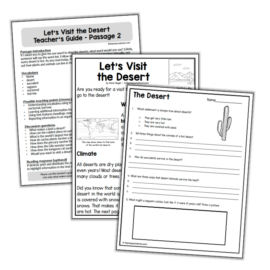
Free reading passages
CLICK TO DOWNLOAD
The post Do’s and don’ts for teaching comprehension appeared first on The Measured Mom.
Anna Geiger's Blog
- Anna Geiger's profile
- 1 follower



